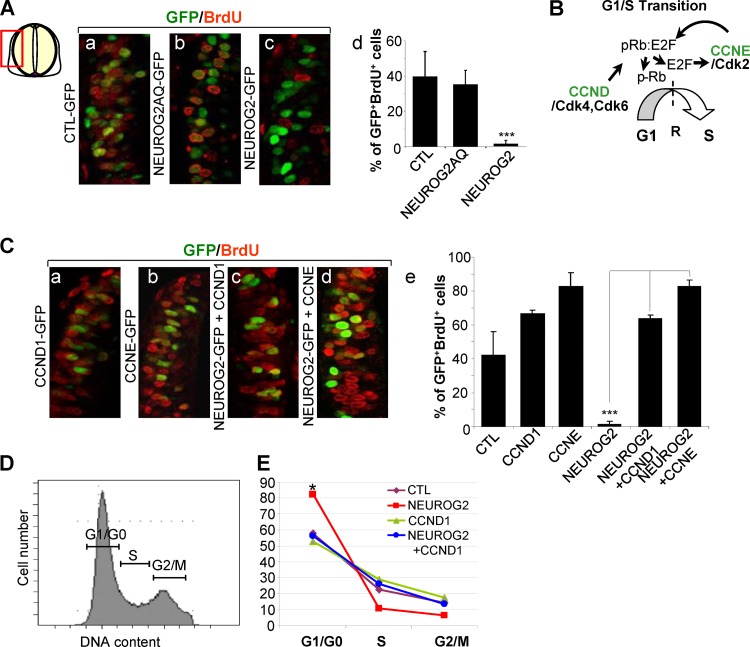Fig 4.
NEUROG2 blocks S phase reentry via the repression of CCND1 and CCNE. (Aa to Ac and Ca to Cd) Close-ups on transversal sections of embryos electroporated with the mentioned constructs and incubated 30 min with BrdU just before harvesting, 6 h following electroporation. GFP in green; BrdU in red. (Ad and Ce) Histograms presenting the quantification of the BrdU incorporation rate in the mentioned experimental conditions (***, P < 0.001; Student t test). (B) Schematic representation of G1/S transition, which is controlled by two families of cyclin: CCND and CCNE. An important restriction point (R) is located at the end of G1 phase. The passage of this point leads to nonreversible passage through S phase. Phosphorylation of pRb by CDK4/6 cyclin D leads to E2F release. E2F promotes cyclin E transcription that in turn further phosphorylates pRb releasing more E2F. High levels of E2F promote the passage through the restriction point in late G1 and activate CCNA transcription that drives cells through S phase and replication. (D) Flow cytometry analysis of cell cycle phase distribution: representative example of the profile of cells expressing control DNA. (E) Curves showing the repartition of the cells in G1/G0, S, and G2/M phases measured on FACS profiles of GFP-positive cells 6 h following electroporation with CTL, NEUROG2, CCND1, or NEUROG2 and CCND1 (*, P < 0.05; Student t test).

